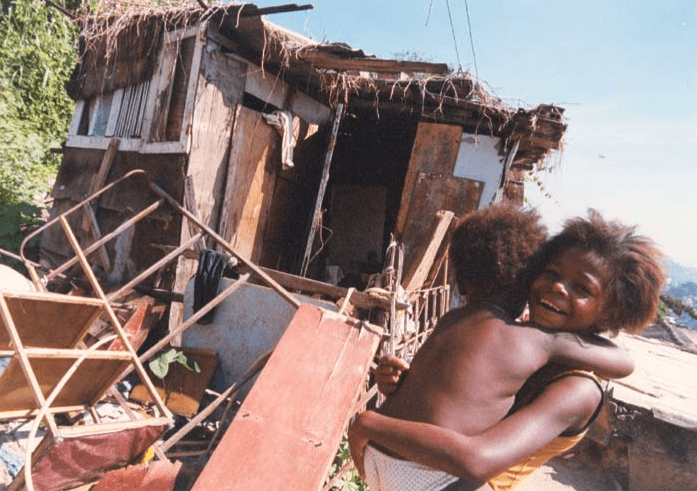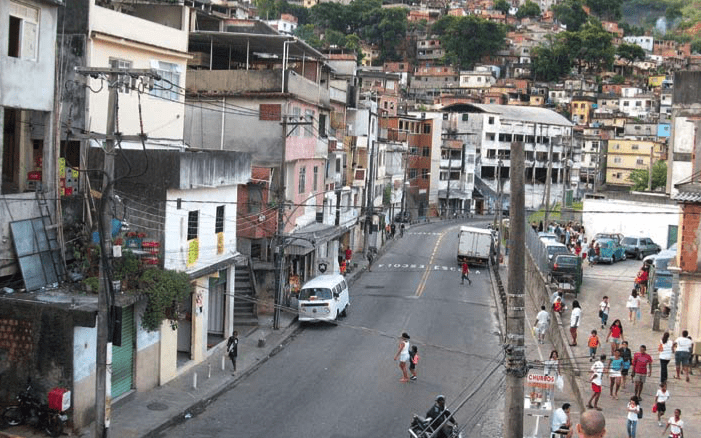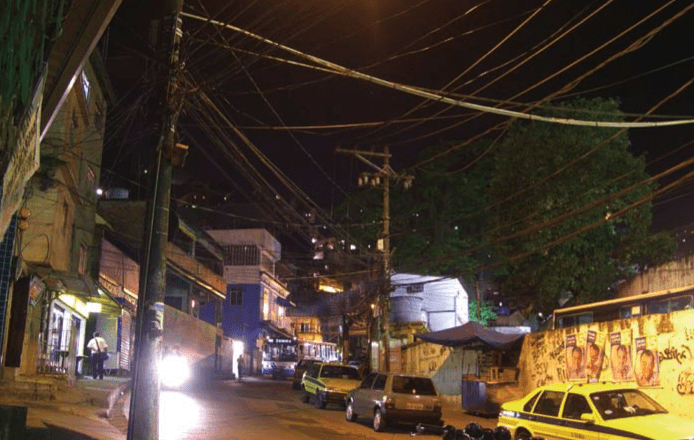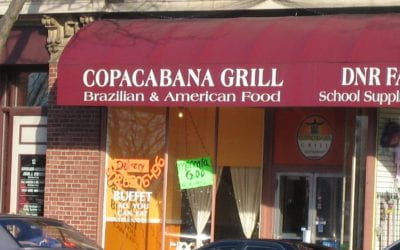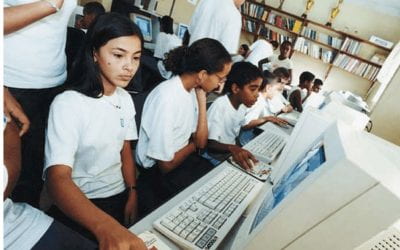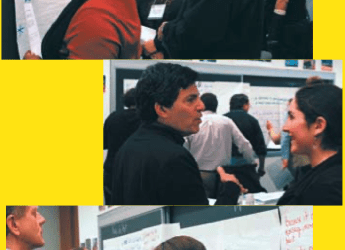The Image of Favelas: Displacing (and Recycling) the Sites of Invisibility
Community Residents Find a Voice
Over the course of more than a century of existence, the favelas of Rio de Janeiro have been portrayed as the setting of an endless war, a constant conflict among conceptions of justice, legality, city, urban order and power. One only needs to glimpse at the newspapers of a hundred years ago and those of today to observe a negative and fearful portrayal. Yet, the situation is slowly changing, and favela residents are involved in a myriad of projects to project their reality to others.
Dialogue between the residents of the favelas and “others” is not new, however, despite the daily violence. Channels of communication emerged even in the late 19th century. Dialogues and deals involved questionable authorities, corrupt public employees, sympathetic politicians, police ‘from the area,’ and other personalities who from the early 20th century began to populate the chronicle of the city. More specifically, the political games that mediated these forms of communication between the favela and its intermediaries eventually transformed its codes of visibility.
The favela and its residents are not immune to the urban violence exploding in many Brazilian cities, paralyzing us all with fear. Favela residents are its main victims, segregated by the absence of the state, their fundamental rights violated by of the lack of basic urban services, such as sewage, water, schools, public transportation, urbanization and policing. Residents are subjected to prejudice, fed by a constant proliferation of images depicting them as dangerous second-class citizens. There is something specific about the kind of violence that affects how “favela,” morro and “favela communities” reflects its most harmful and cruel forms of criminalization. This imagery results in death, physical torture and humiliation in that its residents are physically and morally affected. At the same time, it is reproduced with great efficiency through various forms of stigmatization, which is at times more cruel than the violence itself. The negative image of the favelado is expressed in the daily life of people when—in a scenario of sociabilities inscribed and differentiated by the geographic registry of Rio—they try to exercise the right to citizenship and welfare. Despite public and private projects involving community, local, and international activities, and the indirect presence of government, churches and non-governmental organizations (NGOs), favela residents are aware of the monstrous power of these images of violence and humiliation. Yet the context of Rio favelas has changed radically.
Over the last ten years, different initiatives, born of the confluence of social movements and their articulation under the rubric of NGOs in favela communities, have worked against these biased images and outright practices of discrimination. Residents and non-residents alike have mobilized, organized and engaged in several forms of activism to promote changes in the way in which the favelas are perceived and interpreted. In addition, the construction of websites as spaces for dissemination and networking have stimulated new forms of production, creation, language and mobilization among residents living in favelas. In this article, I will focus on some of these initiatives.
The proliferation of Rio-based projects over the past five years share the idea that all favelas possess a history in which residents are both subjects in the process of formation and participants in their reproduction. A large number of initiatives for the production and recuperation of the memory and history of favelas began in 2000. Networks of local organizations—community associations, community centers and schools—and external partners, local mediators and municipal, state and federal government institutions, international agencies, public intellectuals, and academic ‘volunteers’ (primarily anthropologists, and to a lesser extent, historians) came together in this effort. As reflected in the diversity of partners, this basis already suggests a series of questions: under what circumstances did history become a focus of actions relevant and transformative, able to bring together such a diverse group of partners and constituencies? It is difficult to specify the exact chronology that can trace the formation of a network, and more or less systematic forms of connection, given the diversification and multiplication of these partnerships over the course of the past ten years.
Created as part of the Viva Favela site—sponsored by a group of NGOs, journalists, intellectuals, and agencies—the website Favela has Memory is an attempt to create a virtual and real community of producers of the histories of favelas. The project combines the work of university students who live in communities, and employs techniques of journalism, photo-journalism, history, oral history and ethnography in documenting the memory of community members. Despite the fact that the site is an initiative actually created outside of the favela, its content represents local community-based historiographical and journalistic culture. The website <www.favelatemmemoria.com.br> is subdivided into various sections—Gramaphone, Favelario, Speaking in Favela, Soup of Clouds, Photo Gallery, and Time Line aimed at making history “from a narrative perspective,” while using stylistic and technical support for the elaboration of text and also in the training of those who act as collectors and producers, the “community correspondents.”
This project began as a result of reflection on the externality of discourses and voices that have traditionally spoken on behalf of the favela. Participants launched a series of experiments aimed at confronting images of stigmatization while giving voice to local residents. This was a singular experience that sought, above all, to overcome symbolic and political barriers that implicitly or explicitly differentiated the various actors involved in the project—individuals and institutions from the city and residents of the favelas. Producers trained residents in the production of news, images, and local histories, developing so-called “community correspondents.” These correspondents were seeking news in a medium little known on the part of mass media and state institutions. For residents and those familiar with the social and symbolic space of the favela communities, these “correspondents” would be able to reproduce the voice of its residents on their own terms. At the same time, in taking the term ‘correspondents’ from the language of journalism, the project was based on the idea that residents were mediators authorized to enter as members rather than strangers in a feared territory. Even while edited by a team of professionals and specialists responsible for the training of ‘correspondents,’ other local stories on the favela were constructed from the perspective of its residents. Histories produced based on interviews with the longest-standing residents revealed an intricate favela cartography constructed in parallel with the distancing of its residents from the formal city. However, in gathering information for a website devoted to presenting histories of the favela produced by residents based on interviews and archival research, the correspondents produced and recycled other stories about the city.
The texts, interviews and data collected by the ‘correspondents’ were combined with other materials—information about favelas principally found in the newspapers of the 1950s and 1960s. This kind of source also has an enormous importance in other projects and provides a visual memory of the historical construction of the marginalization of residents of the favelas. An example includes the Centro de Estudos e Ações Solidárias da Maré (CEASM), in the Maré favela complex, in sponsoring the collection of local histories and production of newspapers. A relevant part of the image archives of images is the result of a process of collection by University students resident in these communities have helped developed the image archives under the supervision of social science professors. In the photos, perceptions on the part of the press and the elites, shocked at the growth and proximity of the favelas, led to the gradual stigmatization of the favela as something that should be removed from the city. In contrast to this perspective, students were trained to photograph the contemporary day-to-day of the favelas. The photographs of houses built on sticks (palafitas), materials used in construction, as well as the use of metal, the remains of tapume (pieces of wood used in the construction of public buildings reutilized in the building of houses), and other leftovers from city construction sites are intermingled with personal stories about the daily experience of transformation of the physical space beyond its migrant origins . The residents of the favela radically and continuously transform the physical spaces where they live. Still, “residence in the favela” is a continuation of other forms of organization and policies of deterritorialization carried out through removal—a constantly present form of violence.
Thus, if the history of struggle allows for the recognition over time of the legitimacy of presence in the favela, even if under precarious conditions, the history of removal gives authority to versions recreated around local ownership, based on spatial references. Thus, in trying to implode the negative signals of these historically produced strategies of subjectivity, some of the actors and their projects, contradictorily, would be preserving and even giving force to their boundaries and features of difference based on a supposed common experience. In the current era of urban transformation of Rio, in which the favela and its members have become the focus and scene of publications, presentations, actions, symbolic forms of violence and policies of all kinds, the recognition of their history makes explicit a series of questions that should be objects of reflection.
Other websites Central Unica de Favelas (CUFA) and Favela News Agency (ANF), for example, evoke different forms of representation. Directly linked to social movements and, in particular to the Black movement and other cultural expressions such as the Hip Hop movement—they reach out to other networks, mediators and forms of participation in the public debate. Acting as a broader network of communities organized in Rio favelas but linked politically to similar groups in diverse Brazilian states, the CUFA, for example, coordinates cultural movements involving Hip Hop, sports, cinema, photography and political activism which interpret the favela as a symbolic territory. Rather than exclusively disseminating local interventions, their website coordinates the field of cultural production of youth who produce and consume Hip Hop in the city. The CUFA insists on its legitimacy in expressing the voice of marginalized groups without mediation. Explaining the choice of Hip Hop, its organizers have affirmed that “the periphery is a figure that should speak for itself, have its own voice, and participate in cultural, political and social dialogue one-on-one with other social groups. The periphery is a majority treated by a minority. To dominate the discourse is part of our project of situating things in their true place” (see “Porque Hip Hop”, Central Única das Favelas, < http://www.cufa.com.br>).
But these differences are not only stylistic, nor are they limited to institutional arrangements. The ‘authority’ of their producers—residents of the favela—is highlighted to give legitimacy to the purposefully chaotic aspects of the site. Due to their specificities, these projects cannot be compared entirely on the same terms. I prefer to see them in their complementary dimension and in their possibility of suggesting a particular moment for the transformation of strategies for political mobilization in favela-based communities of Rio de Janeiro. By virtue of their importance in the realm of actions involving social movements, NGOs, and the state, these communities have attained significant visibility, which implies a measurable expansion in the networks of interaction which exist under, between and in between the lines of the discourses that promote a polarized view of, literally, the favela versus the asphalt—that is, the paved areas of the city. These networks promote different ways of semanticizing the categories “favelado” and “favela resident.”.By defending common memories, histories and pasts, these agents call for their rights to power and authority of the word, even if mediated, and at times “handled” by able writers. One of the objectives observed is specifically to produce dialogue, and the coming together through symbolic leveling of citizenship in which a certain notion of history—that of the citizen who is aware, engaged and active, is a part.
The initiatives briefly described here reveal a tension, also present in the tales, testimonies, and conversations about forms of engagement of members with these projects and their various “communities.” Who speaks, for what, and for whom are these stories on the favelas and their members told? By invading the virtual sphere of the Internet, favela communities and their mediators produce a kind of exhumation of ghosts present in the popular and violent imaginary of the city, or reinterpret and recycle its leftovers, fragments, and whatever else can still be reinterpreted. In this form, banners and pop-ups implode our capacity to read the images of the Internet as if they were simply words, “the sensitive territory of the favelas”—an expression coined by the creators of CUFA—populated by different actors and multiple interventions, in transforming itself into a text that invades the web as a territory of expression.
Spring 2007, Volume VI, Number 3
Olivia Gomes da Cunha is a Professor of Anthropology at the National Museum/PPGAS, Federal University of Rio de Janeiro. She is currently Visiting Associate Professor at New York University and was Lehman Post-Doctoral Visiting Scholar at DRCLAS/Harvard during the 1999-2000 academic year.
Related Articles
Becoming Brazuca? A Tale of Two Teens
Prior to arriving in the boston area almost five years ago, I had heard anecdotally that a significant Brazilian immigrant population had been arriving en masse to the region since…
Education: The Role of the Private Sector
I remember walking into the room for my last interview for the scholarship from Fundação Estudar. As soon as the other five candidates and I found our assigned seats, we realized that our…
Biomedical Spending
I have traveled a lot in recent months, from Phoenix and Salt Lake City to Budapest and Amsterdam. I even purchased a world map, one of those for putting up on your wall…

